Leccinum Gray
Many species are known in Europe, although recent molecular studies have reduced significantly their number. Although the reader will find numerous references bellow, they should always consult the treatment of Den Bakker & Noordeloos (2005), some of its results also partly available online (see Noordeloos, online) in the form of a key, descriptions and photographs. Useful keys (excluding two south European species) are provided also by Kibby (2006) and Knudsen & Vesterholt (2008). Everybody reading those pages have to bear in mind that identification of Leccinum currently relies on both macroscopic and microscopic characters.
Fruitbody boletoid without veil and ring. Stipe solid, covered with numerous squamules. Flesh whitish or yellowish, sometimes spotted blue or greenish in the stipe base, in many species changing dramatically to pinkish, reddish, violaceous grey to black.
Leccinum scabrum (Bull. : Fr.) Gray
I am not providing information for this species, except for some photographs seen below. Click here to go to Machiel Noordeloos’ page on Leccinum, where detailed description and other information is provided. Note that the current concept for this species includes Leccinum roseofractum, L. avellaneum and L. rigidipes.
Photographs
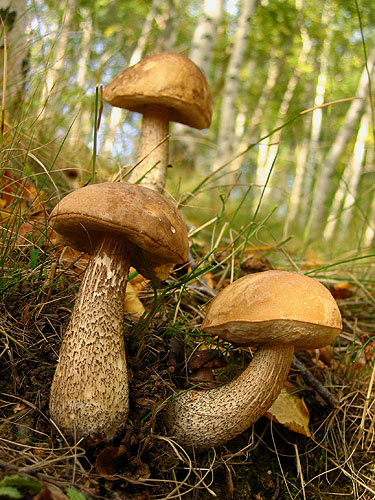
Fruitbodies of Leccinum scabrum. (photo B. Assyov)
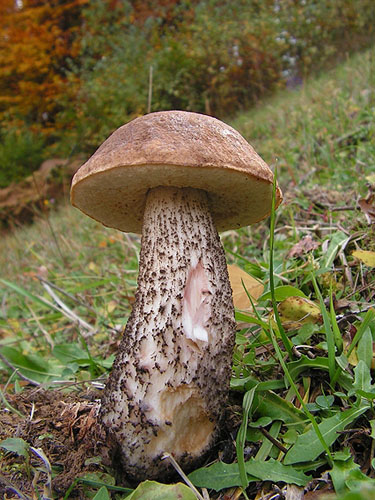
Fruitbody of Leccinum scabrum. (photo I. Assyova)
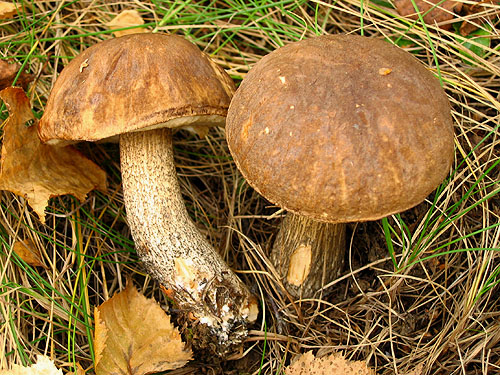
Fruitbodies of Leccinum scabrum. (photo B. Assyov)
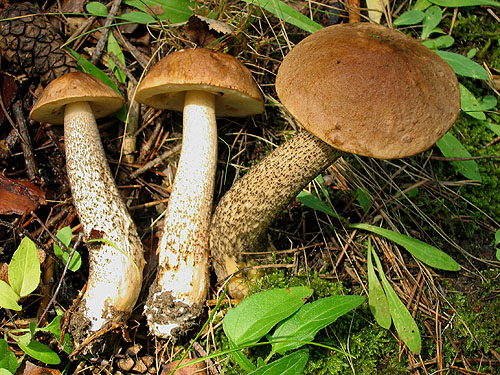
Fruitbodies of Leccinum scabrum. (photo B. Assyov)

Fruitbodies of Leccinum scabrum. (photo B. Assyov)
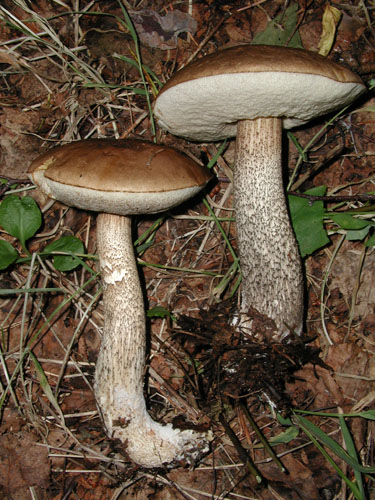
Fruitbodies of Leccinum scabrum. (photo B. Assyov)
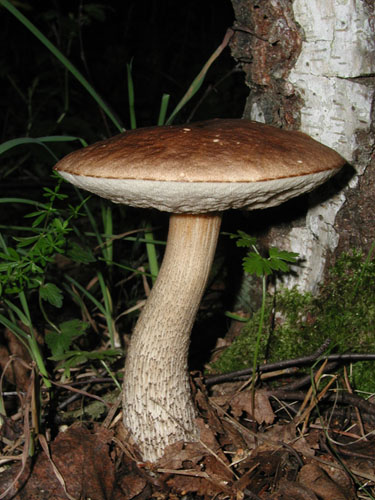
Fruitbody of Leccinum scabrum. (photo B. Assyov)
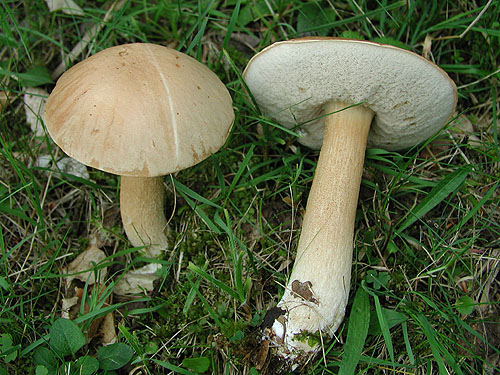
Pale coloured fruitbodies of Leccinum scabrum. This colour form was formerly known as Leccinum avellaneum. (photo B. Assyov)
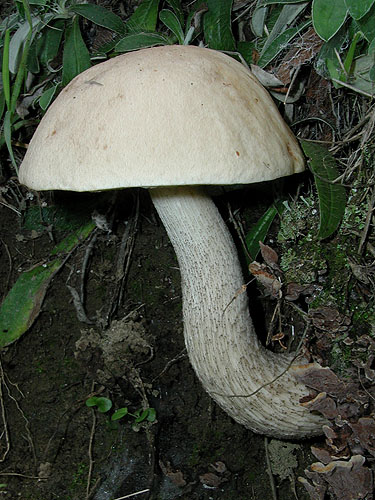
Although rarely, white fruitbodies of Leccinum scabrum are sometimes found. (photo B. Assyov)
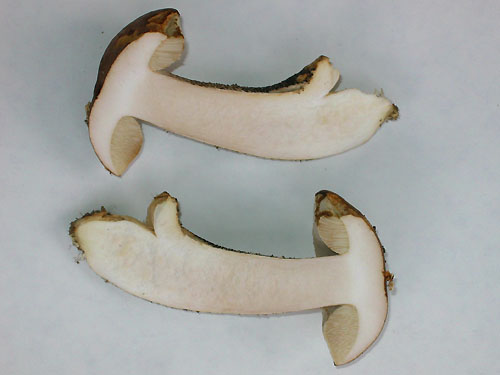
Leccinum scabrum. The flesh in this species is generally white and unchanging, but sometimes flushes pink as in this fruitbody. This pinkish or reddish flush could be quite violent sometimes. Collections with flesh changing to pinkish or reddish were previously called Leccinum roseofractum. (photo B. Assyov)
Important literature
Alessio, C.L. 1985. Boletus Dill. ex L. (sensu lato). – In: Fungi Europaei. Vol. 2. Pp. 1–705. Libreria editrice Biella Giovanna, Saronno.
Breitenbach J. & Kränzlin F. 1991. Pilze der Schweiz. Bd. 3(1). Röhrlinge und Blätterpilze. Verlag Mykologia, Luzern.
Den Bakker, H.C. & Noordeloos, M.E. 2005. A revision of European species of Leccinum Gray and notes on extralimital species. – Persoonia 18: 511–587.
Engel, H. 1983. Rauhstielröhrlinge. Die Gattung Leccinum in Europa. Verlag Heinz Engel, Weidhausen b. Coburg.
Estadès, A. & Lannoy, G. 2004. Les bolets européens. – Bulletin Mycologique et Botanique Dauphiné-Savoie 44(3): 3–79.
Galli, R. 1998. I Boleti. Atlante pratico-monographico per la determinazione dei boleti. Edinatura, Milano.
Kibby, G. 2006. Leccinum revisited. A new synoptic key to species. – Field Mycology 7(4): 77–87.
Knudsen, H. & Vesterholt, J. [eds.]. 2008. Funga Nordica. Nordsvamp, Kopenhagen.
Lannoy, G. & Estadès, A. 1995. Monographie des Leccinum d’Europe. Fédération Mycologique Dauphiné-Savoie.
Lannoy, G. & Estadès, A. 2001. Les Bolets. Flore mycologique d’Europe. Documents Mycologiques Mémoire Hors série no. 6. Pp. 1–163. Association d’Écologie et de Mycologie, Lille.
Noordeloos, M. (online). The genus Leccinum in Northern and Central Europe. http://www.entoloma.nl/html/leccinum_eng.html
Muñoz, J.A. 2005. Boletus s. l. – In: Fungi Europaei. Vol. 1. Pp. 1–951. Edizioni Candusso, Alassio.
Šutara, J., Mikšík, M. & Janda, V. 2009. Hřibovité houby. Čeled’ Boletaceae a rody Gyrodon, Gyroporus, Boletinus a Suillus. Academia, Praha.